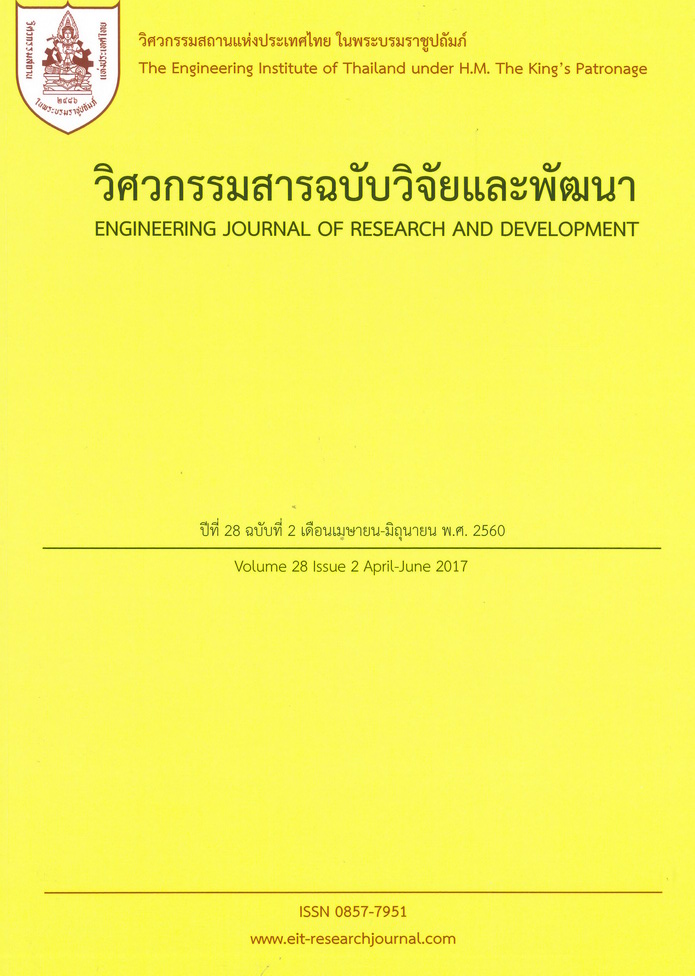การเพิ่มประสิทธิภาพในการกำจัดฟอสฟอรัสทางชีวภาพโดยใช้แหล่งคาร์บอนที่ต่างกัน
Main Article Content
Abstract
การศึกษาชนิดของสารอินทรีย์คาร์บอนที่เหมาะสมในการกำจัดฟอสฟอรัสในน้ำเสีย โดยใช้ระบบ EBPR ซึ่งจะอาศัยสภาวะแอนแอโรบิก แอนอกซิก และแอโรบิก ใช้สูตรอาหารทั้งหมด 4 สูตร ที่มีอัตราส่วนของกลูโคสต่อกรดอะซิติก (CH3COOH) ที่แตกต่างกัน กำหนด SRT เท่ากับ 20 วัน พบว่าทุกสูตรสามารถกำจัด COD ได้สูง (ร้อยละ 70 - 100) ประสิทธิภาพในการกำจัด NH3 สูงถึงร้อยละ 100 ปริมาณ NO2- และ NO3- ในน้ำทิ้งมีค่าต่ำกว่า 0.01 และ 0.1 มก./ล.ตามลำดับ แต่สูตรที่ 4 ที่ใช้แหล่งคาร์บอนเป็นอะซิเตท (CH3COONa) ทั้งหมด มีประสิทธิภาพในการกำจัดฟอสฟอรัสสูงที่สุดถึงร้อยละ 99 กล่าวได้ว่า PAOs มีความสามารถกำจัดฟอสฟอรัสนั้นอาศัย CH3COONa รวมถึงที่อัตราส่วน COD:P ที่เหมาะสม ซึ่งจะส่งผลต่อประสิทธิภาพการกำจัดฟอสฟอรัส
EFFICIENCY ENHANCEMENT OF BIOLOGICAL PHOSPHORUS REMOVAL WITH DIFFERENCE CARBON SOURCES
The aim of this project is to study biological phosphorous removal in term of different carbon source. Anaerobic-anoxic-aerobic conditions included in enhanced biological phosphorus removal (EBPR). This study used 4 types of synthetic wastewater having different ratio of glucose to acetic acid. The SRT was 20 days. Overall experimental results demonstrated that the COD removal (70 - 100%). The removal efficiency of NH3 found almost 100%. Nitrite and nitrate in the effluent were less than 0.01 and 0.1 mg/L., respectively. However Part 4 was effective in removing phosphorus up to 99%, in which usage of carbon source was 100%. These conditions were suitable for growth of PAOs that have the ability to eliminate phosphorus. Acetate and the ratio of COD:P influenced the efficiency of phosphorus removal.
Article Details
The published articles are copyright of the Engineering Journal of Research and Development, The Engineering Institute of Thailand Under H.M. The King's Patronage (EIT).

